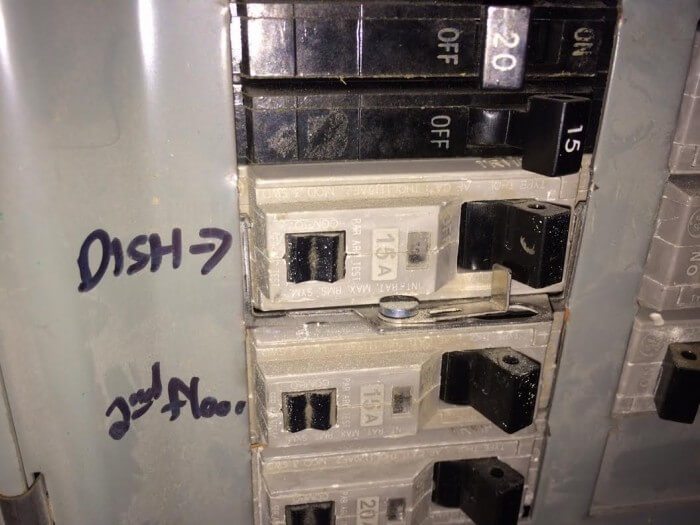I recently had someone send me an email, asking why their circuit breaker had a lock on it, preventing the breaker from being turned off, or tripping. It would seem that this is a safety hazard, wouldn't it?
The answer is actually quite simple, but let me first explain why that locking device is there.
Section 422.30 of the National Electric Code (NEC) requires a disconnecting means for all appliances. The idea is that someone should be able to turn off the power to an appliance to safely work on it. You don't want someone in one part of a building working on exposed wires, and then have someone else in another part of the building unknowingly turn the power back on and electrocute the person working on the wires. Makes sense, right?
One obvious disconnecting means is a cord and plug. If you can unplug something, it's disconnected. So there's that.
For small appliances under 300 Volt-Amperes, such as doorbells and smoke alarms, it's good enough to have a circuit breaker that can be turned off. For everything else, the branch circuit switch or circuit breaker can be used as the disconnecting means for the appliance as long as the switch or circuit breaker is within site from the appliance (within 50', unobstructed view), or there is a proper locking device present at the circuit breaker. What you're seeing in the photo above is a locking device at the circuit breaker.
If someone wants to work on the hardwired dishwasher and not have to worry about someone in a different part of the home turning the power on, they can turn the power off to the circuit breaker, and then throw a small padlock on the circuit breaker. A few common places to have locking devices like this are on circuits for dishwashers, electric water heaters, and wall ovens.
Back to the point…
So anyways, getting back to the original question, the simple answer is that this lockout device will not interfere with the operation of the circuit breaker. If the circuit breaker trips, the power will be cut off, regardless of whether or not the handle is allowed to move. To demonstrate, I installed a circuit breaker lockout at my own panel and made a little video clip. Check it out.


